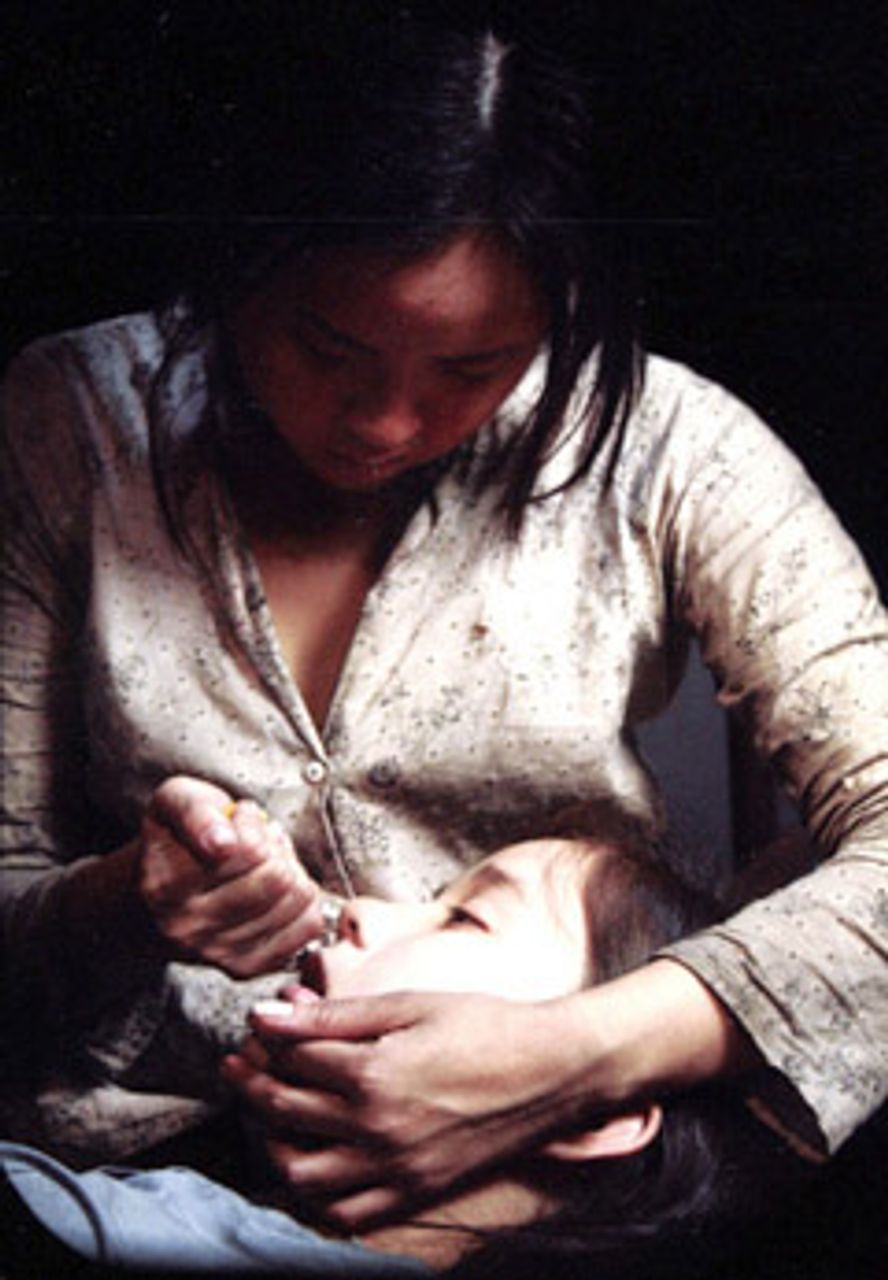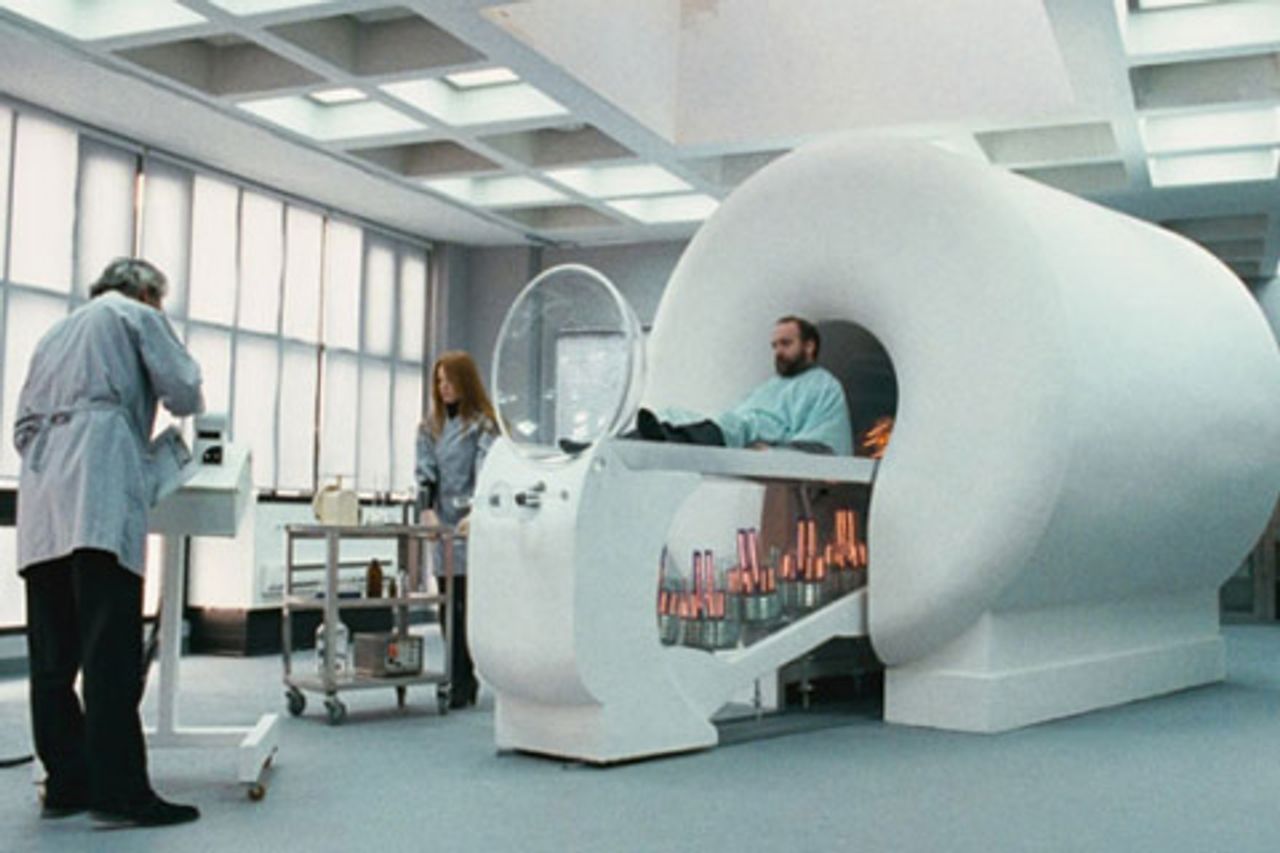This is the first in a series of articles on the 56th Sydney Film Festival held June 3-14.
The Sydney Film Festival was cut by 30 percent this year, running for 12 days instead of the usual 19 and only screening 154 films (118 features and 36 shorts), compared to last year’s 250 movies, and 2007’s 290. Initial statements by festival organisers claimed that the cuts were in response to complaints of “viewer fatigue” and that a shorter festival would be more “financially viable”.
Festival director Clare Stewart later admitted, however, that the decision, which was taken just nine weeks before the festival, came in response to declining corporate funds. “As any arts organisation would say right now, it’s a bloody tough environment for finding corporate sponsorship,” Stewart said. “Other film festivals—Sundance, Tribeca, San Sebastian—have all been open about that ... and in the current economic climate, it behoves us to be economically responsible.”
Discussions are underway about holding next year’s Sydney festival in November, which some officials believe will boost attendances, and therefore revenue, and end the winter overlap with the Melbourne film festival, a larger and more prestigious event.
The obvious question, however, is why is this important cultural event, held in a major global centre, so dependent on private sponsorship? Why does it not receive adequate funds from the state and federal governments?
Unfortunately the quality of new work screened this year was patchy and generally undemanding, with critical human issues largely unexplored. Few filmmakers appear to have anticipated, let alone understood, the social and cultural implications of the most serious financial crisis since the Great Depression of the 1930s.
This is obviously a complex problem—social consciousness lags behind changes in the economic superstructure—but the Sydney festival is increasingly dominated by commercial considerations, ensuring that little is done to encourage a socially critical attitude amongst its audience. Each year festival organisers spend inordinate amounts of time and energy on red-carpet events, fawning over film industry heavyweights and promoting blockbuster studio productions that already have multi-million dollar screening deals with local distributors.
When the Sydney film festival began in 1954, it aimed to provide access to ground-breaking work from outside the Hollywood mainstream. It also became an important focus for challenging Australia’s conservative censorship laws. Whilst much has changed in the past five decades, Sydney patrons from the early festival years would no doubt rub their eyes in disbelief at those blatantly commercial works—such as Coraline, Pixar’s latest multi-million dollar animation, and other light-weight fare—screened at this year’s event.
Competition entries disappointing
Entries for the festival’s $60,000 best feature prize were generally poor and we will comment on some of them in later articles. Competition movies, according to the festival’s criteria, must be “courageous, audacious and cutting-edge”. Those we saw—Bronson, Disgrace, Missing Water, The Maid, Looking for Eric, Louise-Michel and The Girlfriend Experience—failed to attain this somewhat nebulous standard.
The best of the competition movies was Looking for Eric, written and directed by Ken Loach, about Eric Bishop (Steve Evets), a postal worker and single parent with two troublesome boys and increasing problems with a local gangster. The movie also stars former Manchester United football legend Eric Cantona. Despite some obvious weaknesses, including a rather naïve happy ending, Loach’s movie displays a healthy affection for its characters and promotes the idea of a collective response to the social problems they face.
Steven Soderbergh’s The Girlfriend Experience is a documentary-style drama about a high-class prostitute serving multi-millionaire financiers. Shot last year on high definition digital video and set against the onset of the global financial crisis, Soderbergh’s movie has a stylish look, but it skips across the surface. It delivers few fresh insights into its protagonist or the prostitution industry, and its references to the economic meltdown and how it impacts on her Wall Street clients are intriguing, but very limited (see: “The Girlfriend Experience: Not rich or thorough enough”).
 Missing Water
Missing WaterMissing Water directed by Khao Do explores the plight of four Vietnamese refugees who, in the aftermath of the US military defeat in Vietnam, escape by fishing boat to Australia. Most of the movie, based on a local play, is set in a Sydney clothing factory, as a female Vietnamese clothing worker recalls her perilous journey to Australia. The sewing machines are arranged to resemble a refugee boat.
Do came to Australia from Vietnam with his parents and older brother as refugees in 1980. More than 1.5 million Vietnamese fled their homeland between the end of the war in 1975 and the mid-1990s, with thousands losing their lives when their small fishing boats sank or were attacked by pirates.
Missing Water is a marked improvement on the talented filmmaker’s comedy Footy Legends [2006]. However, Do provides audiences with no context for his subject matter—the war and its political aftermath. Performances by the small cast are energetic but limited by the script’s inadequate character development and the movie’s restricted settings. Apart from the brief introductory and closing scenes, everything is shot inside the clothing factory. Missing Water, unfortunately, fails to rise above the level of a filmed stage production.
Prize-winner Bronson is a biopic by Danish born director Nicolas Winding Refn about Michael Peterson, Britain’s longest-serving prisoner. Peterson was originally jailed on robbery charges in 1974. He changed his name to Charles Bronson, after the actor, and apart from a few months of freedom has spent most of his life in prison, much of it in solitary confinement.
Bronson, which has many similarities with Chopper (2000), the cult movie staring Eric Bana as Australian criminal Chopper Read, is another example of the unhealthy infatuation of Refn and other contemporary filmmakers with disoriented and seriously damaged people, or at least of their inability to shed much light on such individuals’ lives. It is difficult to imagine why the competition jury regarded this as an artistic advance.
Every festival contains work of value—evocative and original imagery, memorable performances and occasionally penetrating insight—but apart from a few notable exceptions, most of these moments were found in the older movies screened. These included several recently restored features, such as King Vidor’s The Big Parade (1925), Larissa Shepitko’s Krylya [Wings] (1966), Ted Kotcheff’s Wake in Fright (1971), Stuart Cooper’s Overlord (1975) and Volker Schlondorff and Margarethe von Trotta’s The Lost Honor of Katharina Blum (1975).
War, nationalism, philistinism, police frame-up and the media vilification of terror suspects were some of the issues explored in this rather disparate but interesting collection. These movies and some recent documentaries, such as Contact, Food Inc., and Nollywood Babylon, will be reviewed in later articles.
Three valuable contemporary features
Everlasting Moments by veteran Swedish director Jan Troell, The Moon at the Bottom of the Well directed by Vinh Son Nguyen, and Cold Souls by Sophie Bartes were among the better contemporary features at the festival.
Everlasting Moments, already reviewed by the WSWS, was a festival highlight. It would be a travesty if this understated and evocative portrait of Swedish working class life in the early years of the twentieth century did not secure an Australian release.
 The Moon at the Bottom of the Well
The Moon at the Bottom of the WellThe Moon at the Bottom of the Well, directed by Vinh Son Nguyen, whose best known works have been inspired by the lives of people devastated by poverty and the Vietnam war, explores social pressures on a childless couple in a Vietnamese town.
Local teacher Hahn (Anh Hong) is the devoted but infertile wife of her headmaster husband Phoung. The couple decide to recruit a young woman in a rural village to be a surrogate mother and second wife. Suspicions are aroused, and government officials and the teacher union are called in to investigate, thus endangering Phoung’s job.
Hahn and Phoung decide to live apart whilst still professing their love for each other. Phoung retains his job, but Hahn is distressed by their separation and begins to lose her psychological bearings after a series of consultations with a local shaman. The Moon at the Bottom of the Well is a sensitive work and the first of Nguyen’s to be screened in Australia.
Cold Souls, Sophie Barthes’s initial feature, is a fanciful and inventive satire about soul removal and transplantation. Set in contemporary America, a troubled actor—Paul Giamatti (playing himself)—has become increasingly distressed about his role in Chekhov’s Uncle Vanya. When Giamatti’s agent tells him about a new medical procedure that eases personal stress by removing 95 percent of an individual’s soul, the actor impulsively decides to undergo the procedure, whilst keeping it a secret from his wife.
Giamatti’s soul, which has the size and shape of a chick pea, is stored in a numbered bank-like vault in New York City—tax-free storage options are available in New Jersey, the actor is told. Less stressed than before, Giamatti’s acting, however, now fails to engage with the essence of the Chekhov play. Friends and acquaintances also notice that he is rather insensitive.
The soul removal and storage business, which is run by a Dr Finkelstein (David Strathairn), can also transplant other souls into their clients and so Giamatti, in order to restore his acting skills, decides to have the soul of a Russian poet inserted. Finkelstein, we later learn, is also involved in illegal soul trafficking with Russian criminals and so-called “soul mules”.
 Dead Souls
Dead Souls
While comparisons have been made with Being John Malkovich and Eternal Sunshine of the Spotless Mind, Barthes’s principal influences are Woody Allen’s Sleeper (1973) and Dead Souls, Gogol’s brilliant 1842 tale about a man who purchases the dead souls of Russian serfs in order to enhance his social standing.
Cold Souls loses some momentum when Giamatti travels to Russia to retrieve his missing soul, but, all in all, Barthes’s movie retains its absurdist deadpan humour and dream-like tone. The movie is a valuable comment on the capitalist free-market where every aspect of life is bought and sold, even something as immaterial as the human soul.
To be continued
